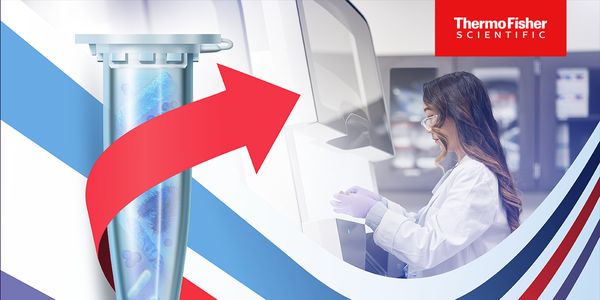RT-LAMP: Best Practices and Tips to Accelerate Detection of Viral Pathogens, Including SARS-CoV-2
-
Ingrida Vendelė, PhD
R&D Manager for Molecular and Synthetic Biology, Thermo Fisher ScientificBIOGRAPHY -
Leann Buhrow, PhD
R&D Scientist, Molecular Biology, Thermo Fisher ScientificBIOGRAPHY
Loop-mediated isothermal amplification (LAMP) uses a stand-displacing DNA polymerase and four to six primers to rapidly amplify DNA at a single temperature. By eliminating temperature cycling, a LAMP reaction may be performed with an inexpensive heat source rather than requiring a thermocycler or qPCR instrument. The LAMP reaction is also easier to perform and interpret that qPCR, with novice users obtaining clear yes/no detection results typically within 30 min. These results may be visually interpreted with the naked eye based on turbidity, colorimetric dye, or fluorescence intensity changes. Finally, LAMP is more tolerant of matrix inhibitors found in diverse sample types, allowing many crude samples to be directly assayed without prior nucleic acid purification. For amplification of RNA targets, a one-step reaction can be carried out by simply adding a reverse transcriptase to a LAMP reaction (RT-LAMP).
SARS-Related Coronavirus 2 (SARS-CoV-2) research and surveillance continues to be paramount, especially given the proportion of asymptotic individuals, emergence of viral variants, and desire to return to work and school. To address the need and urgency of this testing, point-of-care solutions with high sensitivity and rapid turn-around times are required. Several reverse transcription loop-mediated isothermal amplification (RT-LAMP) products have been developed to rapidly, robustly, and specifically detect SARS-CoV-2 and other viral pathogens. Our work at Thermo Fisher Scientific provides the scientific community with RT-LAMP solutions for viral pathogen research and surveillance, including protocols, enzymes, a reaction master mix, and an all-inclusive SARS-Cov-2 assay kit.
Learning Objectives:
1. Explain how to prepare and set-up your workspace for RT-LAMP reactions to achieve the best outcome.
2. Discuss the general workflow to develop and run RT-LAMP reactions to detect viral pathogens.
3. Explain how and why researchers are using RT-LAMP for SARS-CoV-2 research and surveillance.
Please update your information
Certificate of Participation
DOWNLOAD CERTIFICATE







